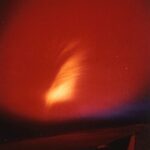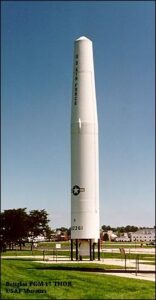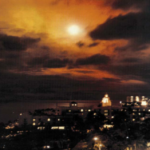 The Cold War, and the Soviet Union’s sudden announcement on August 30, 1961, to end a three-year moratorium on nuclear testing, brought about a shift in US policy, and a number of to nuclear test operations. One, known as Operation Fishbowl was a series of high-altitude nuclear tests in 1962 that were carried out by the United States as a part of the larger Operation Dominic nuclear test program. Flight-test vehicles were designed and manufactured by Avco Corporation. The test planned for the first half of 1962, called Bluegill, Starfish and Urraca were originally planned for the first half of 1962, but the first test attempt was delayed until June. Planning was complex, but necessary.
The Cold War, and the Soviet Union’s sudden announcement on August 30, 1961, to end a three-year moratorium on nuclear testing, brought about a shift in US policy, and a number of to nuclear test operations. One, known as Operation Fishbowl was a series of high-altitude nuclear tests in 1962 that were carried out by the United States as a part of the larger Operation Dominic nuclear test program. Flight-test vehicles were designed and manufactured by Avco Corporation. The test planned for the first half of 1962, called Bluegill, Starfish and Urraca were originally planned for the first half of 1962, but the first test attempt was delayed until June. Planning was complex, but necessary.
The launch sites were planned from Johnston Island in the Pacific Ocean north of the equator. The island was the chosen launch site, rather than the other locations in the Pacific Proving Grounds. However, the testing was not without push back. Even as early as 1958, Lewis Strauss, t hen chairman of the United States Atomic Energy Commission, opposed doing any high-altitude tests at locations that had been used for earlier Pacific nuclear tests. The motivation for concern was the fear of the flash from the nighttime high-altitude detonations might blind civilians who were living on nearby islands. Still, Johnston Island was a remote location. It was more distant from populated areas than the other potential test locations. Nevertheless, in order to protect residents of the Hawaiian Islands from flash blindness or permanent retinal injury from the bright nuclear flash, the nuclear missiles of Operation Fishbowl were launched toward the southwest of Johnston Island. The detonation part of the test would be farther from Hawaii.
hen chairman of the United States Atomic Energy Commission, opposed doing any high-altitude tests at locations that had been used for earlier Pacific nuclear tests. The motivation for concern was the fear of the flash from the nighttime high-altitude detonations might blind civilians who were living on nearby islands. Still, Johnston Island was a remote location. It was more distant from populated areas than the other potential test locations. Nevertheless, in order to protect residents of the Hawaiian Islands from flash blindness or permanent retinal injury from the bright nuclear flash, the nuclear missiles of Operation Fishbowl were launched toward the southwest of Johnston Island. The detonation part of the test would be farther from Hawaii.
The Urraca test involved about a 1 megaton yield at very high altitude of just over 621 miles. With the damage caused to satellites by the Starfish Prime detonation, the proposed Urraca test was always controversial. Because they couldn’t put the fears to rest, the Urraca test was finally canceled, and an extensive re-evaluation of the Operation Fishbowl plan as a whole was made during the 82-day operations pause after the Bluegill Prime disaster of July 25, 1962. When prime was added to a test, it indicated that the main test had failed, so when Bluegill Prime failed, it was the second test fail for that test series, which in this case (Bluegill Double Prime), ended in disaster when the Thor suffered a stuck valve preventing the flow of LOX to the combustion chamber. The engine lost thrust and unburned RP-1 spilled down into the hot thrust chamber, igniting and starting a fire around the base of the missile. Bluegill would go on to have two more tests, before they finally achieved success.

A test named Kingfish was added during the early stages of Operation Fishbowl planning. Two low-yield tests, Checkmate and Tightrope, were also added during the project, so the final number of tests in Operation Fishbowl was five. Tightrope was the last atmospheric nuclear test conducted by the United States, as the Limited Test Ban Treaty came into effect shortly thereafter. A total of Seven rockets carrying scientific instrumentation were launched from Johnston Island in support of the Tightrope test, which was the final atmospheric test conducted by the United States. I suppose testing is necessary, and I don’t know where else or how else it could be done, but the whole thing seems crazy to me. I do think that in light of this and other nuclear test disasters, care should be taken to better protect human life.


Leave a Reply